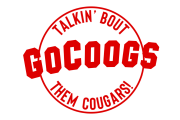
The term “Air Raid” is thrown around these days and has been used a lot leading up to the Washington State game. Understanding the term Air Raid may help your understanding of defending against it.
Quite often, the term, Air Raid is used to describe the spread offense. Any spread offense. I’d like to help Cougar fans understand the principles of the Air Raid as well as the underlying philosophy as a whole. Not all spread offenses utilize Air Raid principles.
Philosophy of the Air Raid
Most of what the Air Raid is, as a philosophy, could be seen during our practices. We lived it. In my time at Houston, I was able to practice against both Coach Holgorsen’s Air Raid in 2009 as well as Kliff’s version in 2011. And if you look at Coach Leach’s Air Raid, there are some basic principles that are consistent with the 2009 and 2011 versions that I saw.
1. Spacing and leverage: That’s what the Air Raid thrives on. By spreading you out, the Air Raid is able to “be where they ain’t” as many coaches have said before. They force the defense to react and to do so by covering from sideline to sideline. Those 53.333 yards across are important to the Air Raid guys. They want them all.
By spacing out the DL, you push the ends further and further away from the QB. That DL is still responsible for a gap but now the gap is 9 feet further from the QB. And he’s not in the QB’s passing lanes over the middle of the field.
They also spread a defense by forcing them to account for every eligible receiver on every down. It’s rare to see a Leach team keep a running back in to block – he’s out there on a flare or a swing route looking to catch it but also to draw a defender away from a WR. By going sideline to sideline, spacing out the DL, and adding additional pass-catching options, the offense is able to exploit the defense in many ways.
2. Diligence: Leach will show a play or concept in film study. And he shows it from past seasons at Wazzu or even Tech or from someone else. He’ll show them over and over. He’ll pick apart every piece of the play helping every player know their responsibilities. Then you walk outside and walk through it over and over. And then you go live and practice it a ton. And keep practicing it.
Leach will keep the “playbook” small so that his guys can know the plays, their route tree, and responsibilities, depending on what the defense is showing. And then they practice those plays thousands of times during a season.
When the QB gets to the line, it is his responsibility to audible to the correct play or route tree because he is responsible for seeing everything. Leach trusts his QBs because he’s prepared them, usually for years, to be excellent as soon as they step on the field.
Meanwhile, their opponents have a thick playbook with 2-3 base defenses and they’re trying to learn all of them and call it, substitute for it, and execute it in the 10 seconds between plays.
3. Go Fast: The “hurry-up” component of the Air Raid offense makes things that much more difficult. During walk-throughs in my time at UH, no one was ever walking. The offense was running their 2-minute script multiple times a day. Yelling out the down and distance, changing formations on the fly, and never subbing players (so that the defense wasn’t able to sub) were constants.
During the Ticket City Bowl in 2011, I know some of our fans saw the entire Houston sideline yelling at the chain crew to hurry up after each first down. It’s a culture thing: we want to go fast while Penn State is a slow, plodding team. The refs and chain gang evidently hadn’t seen us play that year. The Penn State defense was used to seeing about 57 plays a game that year.
We ran 53. In the first half.
4. Play Calling: The most important thing to understand about the Air Raid is that the playbook, assuming they even have a playbook, isn’t very big. By changing formations and their spacing, the Air Raid is able to run the same 5-10 plays, over and over, much better than most teams can attempt to run a binder full of plays.
That’s why they are so good: it’s not that Hal Mumme and Mike Leach discovered a whole new offense. No, Leach has gone in and cut the fat and empowered his QB. Ryan shared this quote from Leach the other day:
“If you wanna screw with the defense, screw with formations, not plays,” Leach wrote in Swing Your Sword.
It’s true: We can see plays on film but a coach can mix and match 7-8 formations which each play. There’s not enough time to study it all to a point where you know it.
In our next story, Ryan Monceaux and I will look at specific concepts and plays you’ll see from the Leach offense tonight.

Please enjoy some free content:



